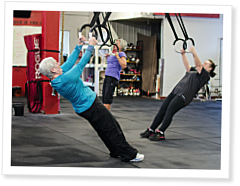
While physical capacity inevitably declines as athletes age, fitness has dramatic effects on health and quality of life.
“How much should I be lifting?”
It’s probable every coach or trainer has been asked this question, and the query is usually qualified with variables including age, body weight and so on.
We as trainees, and humans in general, really like to compare what we can do with what other people can do, so we create standards for many common exercises. A standard is what we can realistically expect of someone with specific characteristics—sex, age, training experience—in a particular exercise. Sadly, few authoritative sources exist, and we can only strive to provide a relatively close approximation to help the trainee evaluate his or her performance and set goals.
When asked to provide performance standards, coaches must rely on a very limited data set in the literature, their own experience in training, observations of the people they train and pseudo-mathematical estimation. In many instances there is no referential data for an exercise in the literature, so that leaves only experience, observation and estimation.
The largest set of paying customers in the fitness industry is made up of people over 30, and this group is most often interested in how their newfound fitness levels stack up with people their own age. We see this in the 2015 industry report “The Wellness Deficit: Millennials and Health in America,” in which almost two-thirds of the surveyed population said it is important to track and monitor their fitness progress. CrossFit, of course, is driven by data, and few trainees ignore whiteboards and logbooks.
So what can we expect for ourselves and our clients in terms of performance as we age?
No comments:
Post a Comment